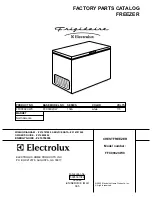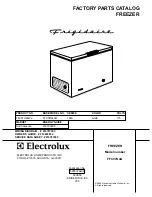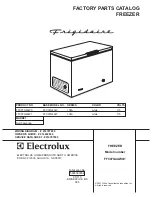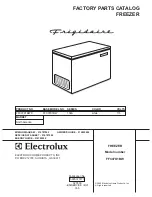
23
ture before placing in the appliance.
Overloading the appliance forces the
compressor to run longer. Foods that
freeze too slowly may lose quality, or
spoil.
• Be sure to wrap foods properly, and
wipe containers dry before placing
them in the appliance. This cuts down
on frost build-up inside the appliance.
• Appliance storage bin should not be
lined with aluminum foil, wax paper,
or paper toweling. Liners interfere
with cold air circulation, making the
appliance less efficient.
• Organize and label food to reduce
door openings and extended search-
es. Remove as many items as need-
ed at one time, and close the door as
soon as possible.
4. CLEANING AND CARE
• Dusts behind the refrigerator and on
the ground shall be timely cleaned to
improve the cooling effect and energy
saving.
• Check the door gasket regularly to
make sure there are no debris. Clean
the door gasket with a soft cloth
dampened with soapy water or dilut-
ed detergent.
• The interior of the refrigerator should
be cleaned regularly to avoid odor.
• Please turn off the power before
cleaning interior, remove all foods,
drinks ,shelves, drawers, etc.
• Use a soft cloth or sponge to clean the
inside of the refrigerator, with two ta-
blespoons of baking soda and a quart
of warm water. Then rinse with water
and wipe clean. After cleaning, open
the door and let it dry naturally be-
fore turning on the power.
• For areas that are difficult to clean in
the refrigerator (such as narrow sand-
wiches, gaps or corners), it is recom-
mended to wipe them regularly with
a soft rag, soft brush, etc. and when
necessary, combined with some aux-
iliary tools (such as thin sticks) to en-
sure no contaminants or bacterials
accumulation in these areas.
• Do not use soap, detergent, scrub
powder, spray cleaner, etc., as these
may cause odors in the interior of the
refrigerator or contaminated food.
• Clean the bottle frame, shelves and
drawers with a soft cloth dampened
with soapy water or diluted detergent.
Dry with a soft cloth or dry naturally.
• Wipe the outer surface of the refriger-
ator with a soft cloth dampened with
soapy water, detergent, etc., and then
wipe dry.
• Do not use hard brushes, clean steel
balls, wire brushes, abrasives (such as
toothpastes), organic solvents (such
as alcohol, acetone, banana oil, etc.),
boiling water, acid or alkaline items,
which may damage the fridge surface
and interior. Boiling water and organic
solvents such as benzene may deform
or damage plastic parts.
• Do not rinse directly with water or
other liquids during cleaning to avoid
short circuits or affect electrical insu-
lation after immersion.
Defrosting
• Freezer shall be manually defrosted.
• Unplug the freezer and open the
freezer door, remove foods and shelv-
ing basket before defrosting;
• Open the outflow hole and drainage
hole (and place water container at the
outflow hole); indoor frost will natu-
rally melt, wipe the defrost water with
a dry, soft cloth. When the frost sof-
tens, an ice scraper might be used to
the accelerate de-icing process.
• Please remove the food and put in a
cool place when defrosting before re-
moving accessories.
Содержание ST-CF2B290L01EU(A1)-W
Страница 18: ...18 1 The Freezer Handle optional Power cord Shutter Shelving basket Temperature control Cabinet Drainage hole...
Страница 26: ...26...
Страница 27: ...27...
Страница 28: ...28...
Страница 29: ...29...










































